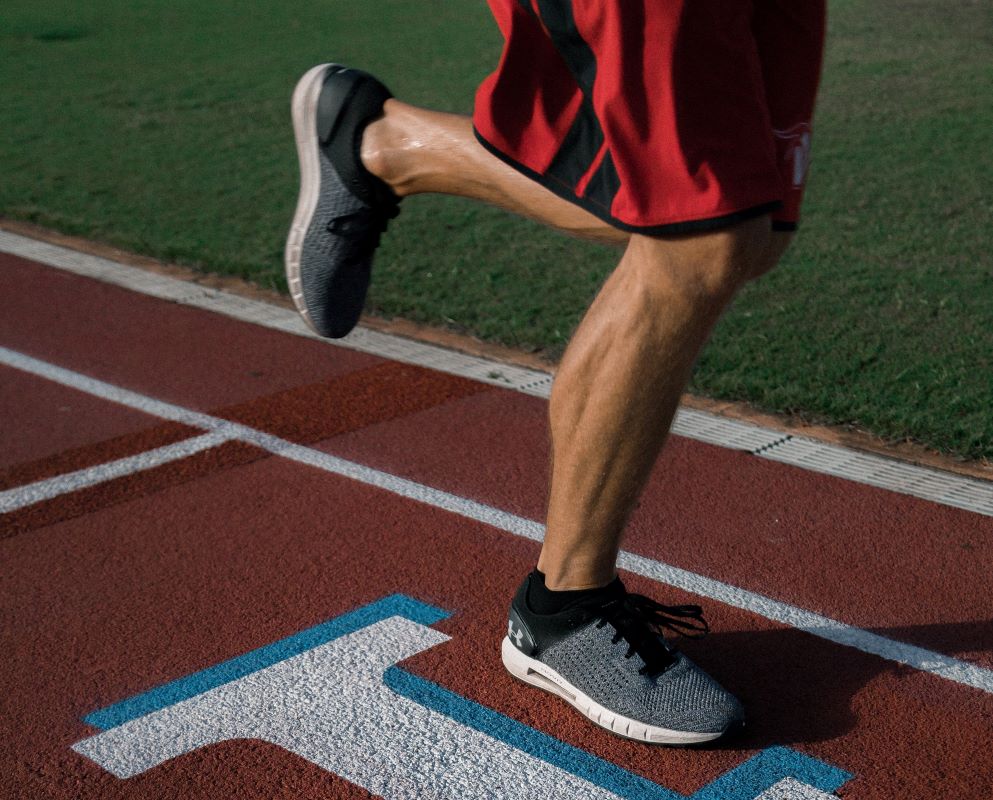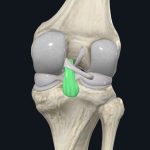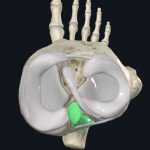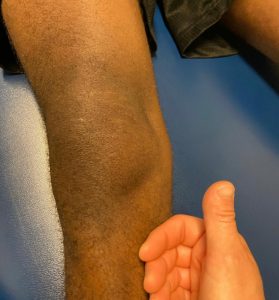
If you’re familiar with knee injuries, you have probably heard of the anterior cruciate ligament (ACL), one of the most common ligament injuries of the knee. An ACL injury has a notoriously long recovery time—most medical professionals recommend nine months to a year recovery before returning to sport.
In contrast, posterior cruciate ligament (PCL) injuries are less common, but many of those injuries also involve other ligaments like the ACL. How is the rehab process? What does it take to get back to normal life?
If you have a PCL injury and are looking for up-to-date information on what to expect throughout the rehab and recovery process, look no further!
The PCL and Knee Anatomy
The PCL is a cruciate, or X-shaped, ligament that connects the two major bones of the knee, the femur (thigh bone) and the tibia (shin bone), to one another at the back of the knee.
The main role of the PCL is to prevent the shin bone from moving backward too far with its secondary role to control twisting of the knee when it is bent at an angle greater than 90 degrees.
The PCL is made up of two large bundles that have a large area of attachment to the bone, so it’s very strong.
- Posterior (back) view
- Top view
Images courtesy of Complete Anatomy
How Are PCLs Injured?
A misstep will rarely injure the PCL. Completely tearing this ligament requires strong forces.
Common ways to tear the PCL include “dashboard injuries,” where the knee is forced backwards during a motor vehicle accident. They also occur in sports like football, skiing, soccer, and rugby where players can fall on the knee with the foot planted and toes pointing downwards.
PCL injuries are commonly and more accurately diagnosed by a magnetic resonance image (MRI) that can directly visualize the extent of the tissue damage.
Doctors, physical therapists, and athletic trainers can determine if you have a PCL injury using two special tests:
- Posterior Sag Sign (Godfrey Sign) – While lying on your back, your practitioner will bend your knee to 90 degrees with your hip flexed at 45 degrees and will look at the indentation below your knee cap. If there is a larger indent or “sag” backwards compared to your opposite leg, then the test is considered positive.
- Posterior Drawer Test – While lying on your back, your practitioner will bend your knee to 90 degrees with your hip flexed to 45 degrees. With their hands placed on the top of your shin bone, they will then apply a backwards force to determine if there is excessive motion of your shin bone backwards. It is considered a positive test if there is a lot of instability present.
These special tests can also help to determine the grade or extent of a PCL tear which will play a role in determining the next steps in treating the injury.
Grades of PCL Injuries
There are four grades of PCL injuries:
- Grade I: Partial tear of the ligament.
- Grade II: Partial tear of the ligament with some instability (laxity).
- Grade III: Complete tear of the ligament with an unstable knee.
- Grade IV: Injury of the PCL with another ligament tear present (commonly ACL with jumping and twisting injuries or LCL).
It is common for grade I/II tears to heal on their own with proper care. That’s right—these injuries can take anywhere from two weeks to six months to heal depending upon the extent of the injury, and typically require a course of physical therapy to help strengthen the musculature around the knee to prevent the knee from feeling unstable later on.
Grade III/IV tears can require surgery, and usually do require surgery when there is a combined tear present, but every case is different. PCL rehab can take anywhere from six months to a year, but the good news is that the success rate for surgical repair followed by a course of physical therapy is about 85 percent!
What to Expect After a PCL Tear
You’ll know quickly if you have a ligament injury in your knee. Similar to an ACL injury, common signs and symptoms of a posterior cruciate ligament injury include:
- Pain that lingers after injury
- Swelling that occurs quickly after the initial injury and is difficult to resolve
- Severe stiffness in the knee
- A feeling of instability in the knee like it may give way
- Difficulty walking/limping
If you are experiencing any of these signs or symptoms, it is important to follow-up with your doctor who can perform a further evaluation to determine which ligament is injured. Then, your doctor will refer you for additional testing/imaging or send you directly to physical therapy.
- Swelling after a knee injury
If your doctor refers you directly to physical therapy, your therapist will perform a thorough assessment of your range of motion, strength, and stability to determine which interventions are most appropriate. Communication is key—tell your physical therapist your goals so you can work toward achieving them together.
Expect to go home with some homework on the first day, also known as your home exercise program (HEP). Your HEP facilitates a faster recovery and helps maintain your gains between sessions. For more information on HEPs, see our blog on the importance of home exercises.
It’s common for your doctor or physical therapist to recommend wearing a brace for up to six weeks. This brace will help keep the shin bone forward and allow the PCL to heal in a tightened position.
The frequency of physical therapy and total duration of treatment will depend upon several factors, including the grade of the PCL injury, your specific deficits or impairments, and your personal goals.
About Your PCL Surgery
PCL surgery is typically an arthroscopic procedure, using a small camera to visualize the injured area. Patients usually discharge from the hospital the same day. Be sure to plan a ride home with a family member or a friend!
Most PCL surgeries use an allograft, often a tendon from the ankle or knee cap of a cadaver, to reconstruct the ligament. The graft is kept in place by either screws or staples. It can either be a large single bundle graft or a smaller double-bundle graft depending on surgeon preference, although there is no evidence that one graft is better than the other.
The graft can also be inserted into the shin bone in two different ways: either via arthroscopy (cameras) with small incisions, or via tibial inlay where a larger incision is made at the back of the knee.
Your surgeon will choose the type of graft and method of attachment depending on what’s appropriate for your unique situation.
PCL Injury Treatment
Treatment for the posterior cruciate ligament depends on severity. For lower grade injuries, you may be able to recover with physical therapy alone. Greater injuries or complete tears could result in surgery, although recommendations vary by case. However, you’ll still need physical therapy after surgery, and it usually starts within the first week.
After surgery, you will wear a brace to protect the graft and prevent the shin bone from shifting backwards. You will also be sent home with crutches to help offload the knee as it heals.
Every surgeon’s protocol is different. Usually, you will continue to wear the brace and use crutches for about six to eight weeks, or until you have good strength of the quadriceps muscle to protect the graft while walking. The doctor may lock your brace in a straightened position for the first several weeks to reduce any strain on the graft with walking. You may also have to wear the brace to sleep. Check with your surgeon to get specific instructions for your recovery.
The top priority for the first three months is to protect the graft as it heals to your bone. This is why some protocols limit your knee bend to 60 to 90 degrees for the first several weeks. Your surgeon and therapist will also recommend placing a pillow under the knee at night to prevent stress on the graft.
Return to driving varies based on your surgeon’s protocol and your individual abilities. Plan to coordinate a ride to physical therapy for the first several weeks.
Remember: Rehab can take anywhere from six months to a year. Rehab time depends on your individual needs and your goals. Expect your rehab to feel like a marathon, not a sprint!
Reach Out
If you think JACO Rehab may be a good fit for you, reach out to us at 808-381-8947 or info@jacorehab.com to schedule an appointment with us today.


